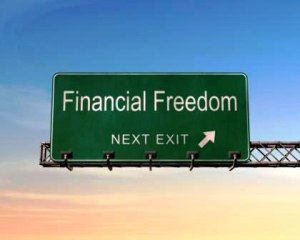Baby Step # 4 – Invest 15% of your Household Income into
ROTH IRA’s and Pre-Tax Retirement.
 By the time you get to Baby Step #4 you have paid off all of your debt except for your house. You have fully funded your emergency fund with three to six months of living expenses and you’re feeling pretty good about your finances… AND YOU SHOULD!!! It takes a lot of effort and discipline to work yourself out of the hole that you put yourself in. You have had to learn some new information about how to handle money and you have had to alter some behaviors that got you into financial bondage the first time… and the second time… and the third time… At least that’s how it worked for us!!!
By the time you get to Baby Step #4 you have paid off all of your debt except for your house. You have fully funded your emergency fund with three to six months of living expenses and you’re feeling pretty good about your finances… AND YOU SHOULD!!! It takes a lot of effort and discipline to work yourself out of the hole that you put yourself in. You have had to learn some new information about how to handle money and you have had to alter some behaviors that got you into financial bondage the first time… and the second time… and the third time… At least that’s how it worked for us!!!
Now that you are experiencing freedom from debt, you can forget about your past mistakes and focus on today and the days ahead. This is the fun part… we get to start building wealth! Just like getting out of debt, to be really effective at building wealth you need a plan.
Start by taking part in a pre-tax savings plan. Some of the most popular pre-tax plans are 401(k), 403(b), Thrift Savings Plan (TSP), or a Traditional IRA’s. Some of the tax-free plans are Roth 401(k) and Roth IRA’s.
 But what do all of those numbers mean… it looks so confusing!!!
But what do all of those numbers mean… it looks so confusing!!!
The numbers are just references to the part of the tax code that defines how that money is treated by the IRS when it comes time to pay the taxes on it.
So how do I know where to put the money for the best return?
If your employer matches your contribution to a 401(k), 403(b), or TSP invest in those plans, up to the matching limit first. The company match is an instant 100% return on your investment… that’s a really good deal!!!
 After your contribution equals the company match, you would want to fully fund a Roth IRA for you and for your spouse. Since Roth IRA’s are funded with after tax dollars, they grow TAX FREE. That’s right… you paid the taxes on the principle that you are funding the Roth account with and all of the compound interest that you earn inside of a Roth account grows without ever incurring a tax liability. It may sound too good to be true but it’s not. Work to fully fund a Roth IRA for yourself and your spouse. There are funding limits based on age and they change annually with the tax code. Check here for the contribution limits.
After your contribution equals the company match, you would want to fully fund a Roth IRA for you and for your spouse. Since Roth IRA’s are funded with after tax dollars, they grow TAX FREE. That’s right… you paid the taxes on the principle that you are funding the Roth account with and all of the compound interest that you earn inside of a Roth account grows without ever incurring a tax liability. It may sound too good to be true but it’s not. Work to fully fund a Roth IRA for yourself and your spouse. There are funding limits based on age and they change annually with the tax code. Check here for the contribution limits.
If you max out your contributions to your Roth and still have money left to invest, invest the rest in you 401(k), 403(b), or TSP.
Here is the standard investing advice that Dave Ramsey gives:
Invest using mutual funds that have a winning track record of more than five years and preferably more than ten years. Don’t even look at the one year and three year records because you want to think LONG-TERM. Then spread your investments evenly across four types of funds.
- 25% in Growth and Income Funds
- 25% in Growth Funds
- 25% in International Funds
- 25% in Aggressive Growth Funds
That’s the basic plan… Don’t think you’re going to be a day trader and get rich, 84% of day traders lose money. Single stocks generally don’t have the return you will get from a good mutual fund. Anything with a life insurance policy attached has the added expense of the life insurance and doesn’t beat the return of a good mutual fund. Keep it simple and limit your investing to 15%.
The 15% limit will allow you to work on saving for the kids college and for paying off the house early.
Remember, you’re working a plan. Just like getting out of debt, building wealth and planning for the future takes time and effort.
If you work the plan, the plan will work for you!!!
Related articles
- How to Open a Roth IRA (humblewallet.wordpress.com)
- Open an IRA Account Today to Catch Up On the Retirement Race (investorplace.com)
- Principles in Practice: Think Beyond Yourself (soundstewardship.com)
- Your Money Matters: Investment strategies for all ages (wgntv.com)
- Why Are You Letting Your Retirement Fund Slip Away? (cannyfinance.com)


